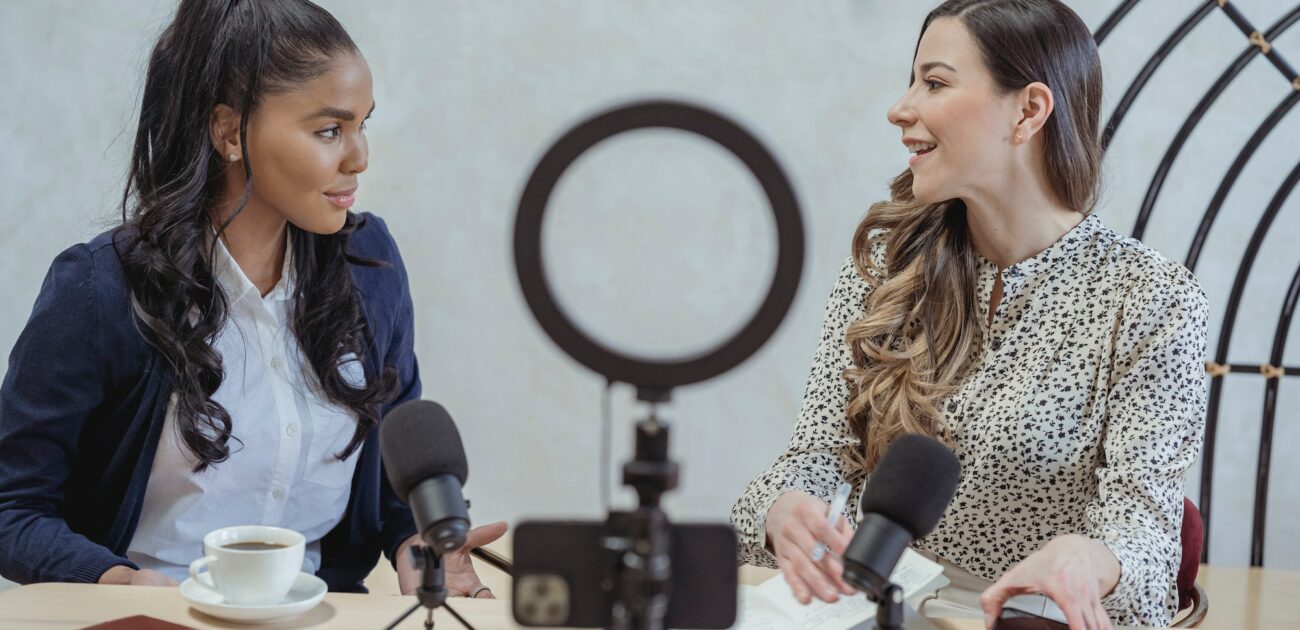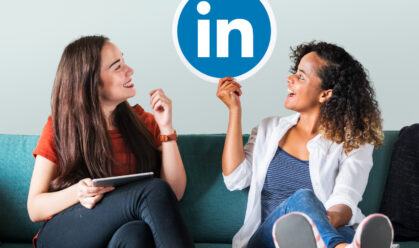Influencer marketing can be highly impactful, with one-third of consumers agreeing that influencer posts are the best way for brands to persuade customers to try new products.
And the best news of all: working with influencers needn’t be complex or expensive.
Port of Seattle’s influencer program started with just a handful of bloggers attending the launch of two new retailers at Seattle-Tacoma International Airport (SEA). Fast forward several years, and it’s expanded to incorporate many successful events, from an airport lounge crawl to an AvGeek plane-spotting session.
In this article, we’ll share insights from Port of Seattle’s Social Media Program Manager Abbey Lampert, who speaks about:
- How to manage an influencer program on a small budget
- Tips for building relationships with local influencers
- Best practices for hosting influencer events
Her learnings benefit what Abbey calls “less sexy organizations” (i.e., anyone who doesn’t work for a retail or fashion brand).
Let’s get into it!
The Origins of Port of Seattle’s Influencer Program
It all started in 2016, when Abbey’s new boss was determined to mix things up: rather than holding a traditional ribbon-cutting ceremony to mark the opening of the new MAC Cosmetics and Coach stores at SEA, they were determined to organize an event for fashion bloggers.
As social media manager, the responsibility landed with Abbey.
With approximately two months to plan the event from scratch, Abbey started by researching relevant local bloggers. She sent invitations, and with support from Hudson — which operated the two new stores — she supplied the bloggers with swag from Coach, MAC, and SEA’s duty-free location.
Abbey was initially disappointed with the number of RSVPs. Still, the event proved successful, generating one blog post, two Instagram posts, multiple Instagram Stories, and several tweets on top of the traditional media coverage.
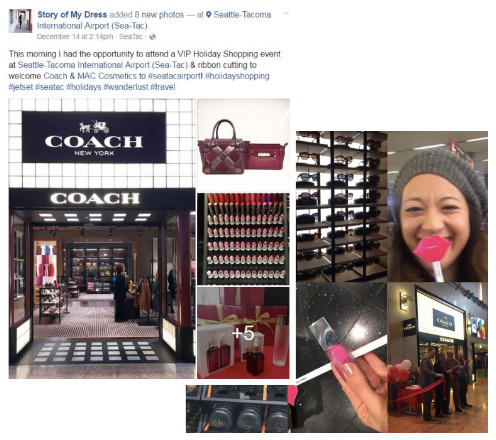
The Value of Brand Partnerships
One of Abbey’s biggest takeaways from this early campaign was the importance of the partnership with Hudson.
“Given we’re a government agency, we couldn’t pay to bring these influencers in and have collaborations like you see on social media — we don’t have that kind of budget,” Abbey explains. “So we needed other ways to work with them and entice them for coverage.”
She soon realized there were lots more partnerships to leverage, thanks to SEA’s various retail and dining locations.
For instance, Abbey teamed up with the airport’s dining partners to offer influencers hosted dining experiences, including a complimentary meal in exchange for social media coverage.
In total, they worked with six influencers, who shared 12 social media posts, generating almost 100,000 impressions.
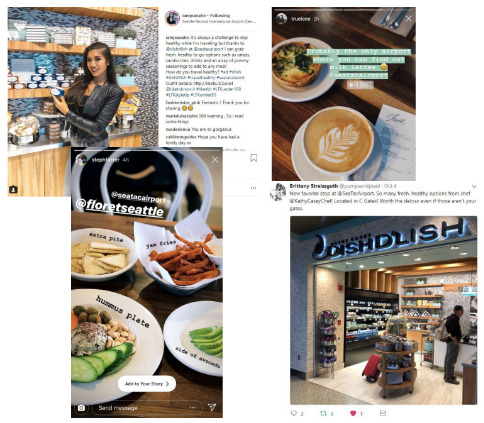
“The engagements were really telling,” Abbey explains. “Folks didn’t know about these concepts at the airport, and so it was a new way to reach an audience that we hadn’t reached in the past.”
Finding Your Niche
One of the biggest challenges of building an influencer list is defining the influencers most relevant to your brand because they’re most likely to be interested in working with you.
Given Port of Seattle’s wealth of retail and dining partners, it made sense to focus on food bloggers. And as an airport, SEA also had an obvious opportunity to collaborate with travel influencers.
Over time, various sub-niches emerged for Abbey, such as family travel influencers and local food and dining bloggers.
The more unique audiences and niches you can identify, the more varied your campaigns will be, allowing you to promote your brand from various perspectives.
Hosting Larger-Scale Events
SEA’s first large-scale influencer event promoted the 2018 holiday travel season and showcased the airport’s range of retailers and restaurants.
Abbey designed this campaign to guide visitors during the holiday period, helping them hone in on places to pick up last-minute gifts or get a festive meal at the airport.
At the same time, Abbey was keen to highlight how SEA was improving. The airport was in the middle of a long-term dining and retail redevelopment program, with new concepts — particularly local and small businesses — replacing some older establishments.
She offered influencers attending the event various experiences, including:
- Holiday beauty tutorials with MAC Cosmetics
- Express spa services
- Holiday bites, sips, and sweet treats
- Menu previews featuring eateries that weren’t open yet
- A gift wrap ribbon and bow tutorial
 In all, 24 bloggers attended, resulting in 160 social media posts and close to 500,000 impressions — a massive increase from previous campaigns.
In all, 24 bloggers attended, resulting in 160 social media posts and close to 500,000 impressions — a massive increase from previous campaigns.
But it wasn’t all about the tangible results; the event also offered an invaluable networking opportunity.
“We could meet and mingle with the influencers and really start building relationships, find out what they were interested in covering at the airport, what they might not know about, so we could help educate them and get to know them as people, not just their Instagram handle.”
Providing Unique Experiences
Giving your influencer events an air of exclusivity makes them feel unique, helping you boost attendance.
To that end, Abbey hosted a lounge crawl — a tour through SEA’s Delta Sky Lounge, Centurion Lounge, and Alaska Lounge, all off-limits to non-members.
The campaign relied heavily on SEA’s brand partners (in this case, the lounges themselves). Each lounge was responsible for organizing and delivering the experience inside their respective locations in return for coverage.
Fortunately, they bought into the project, Abbey explains. “They all understood the importance of using influencers, so it was an easy sell for them.”
Coverage focused on how the lounges use local chefs, the incredible views at the airport, and SEA’s beautiful new spaces.
 Again, the results were even better than previous events, generating 256 total social media posts and 700,000 impressions.
Again, the results were even better than previous events, generating 256 total social media posts and 700,000 impressions.
Working in Less-Obvious Influencer Marketing Niches
So far, all of Abbey’s examples have focused on the airport at Port of Seattle.
That’s hardly surprising: she’s a one-person team, and SEA — with its wealth of dining experiences and status as a major travel hub — lends itself naturally to influencer marketing campaigns.
However, Abbey has also seen success promoting the maritime side of the business, which is a less obvious fit.
In 2021, she researched local photographers and influencers specializing in maritime-themed content or images and videos featuring the Seattle waterfront.
Abbey targeted relevant influencers through direct messages on Instagram and Twitter, informing them of an exciting upcoming opportunity: four large super-post-panamax cranes were entering Elliott Bay in Seattle after spending several weeks traveling from Shanghai. “It was a very unique opportunity and something very cool that they would get to see.”
She didn’t incentivize these influencers with gifts or special access. Instead, she gave them:
- Details of public locations that would be great for viewing
- The approximate arrival time of the ship
- A hashtag for sharing their photos on their social channels
Eight influencers took advantage of the opportunity to capture some truly unique content.
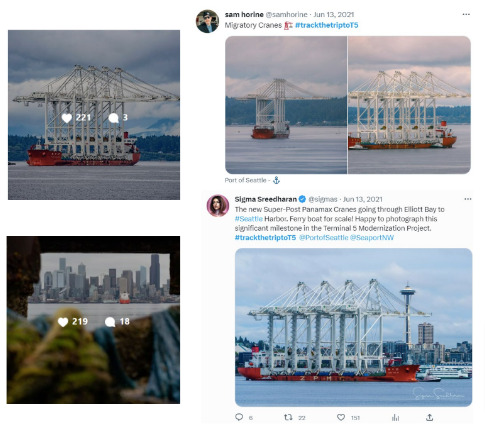
“The cool thing was that they indicated they would be interested in doing something similar in the future, so it was laying that foundation,” Abbey explains.
Handing Greater Control to Influencer Partners
The more she worked with influencers, the more Abbey realized the possibility of giving them greater autonomy.
Not only that, but she figured that influencers tend to know a bunch of other creatives, meaning they could potentially help broaden the reach of Port of Seattle’s campaigns.
Rather than focusing solely on big events, Abbey started working with a select few influencers to co-host special experiences. In one project — timed to welcome people back to travel following 2020’s pandemic-induced shutdown — she worked with four individual influencers who she asked to reach out to 10 influencer friends.
While she suggested her own themes and ideas, Abbey also asked the influencers what they were interested in covering.
“It was about putting some of the ownership on the influencer partners,” she says.
Activating Untapped Audiences & Encouraging UGC
However broad your main target niches are, you’ll eventually run out of new influencers to work with.
That’s when it’s time to seek out untapped audiences.
For Port of Seattle, a prime example is hardcore aviation enthusiasts or AvGeeks.
In one campaign, Abbey arranged to invite a bunch of AvGeeks to the airfield so they could take photos of airplanes.
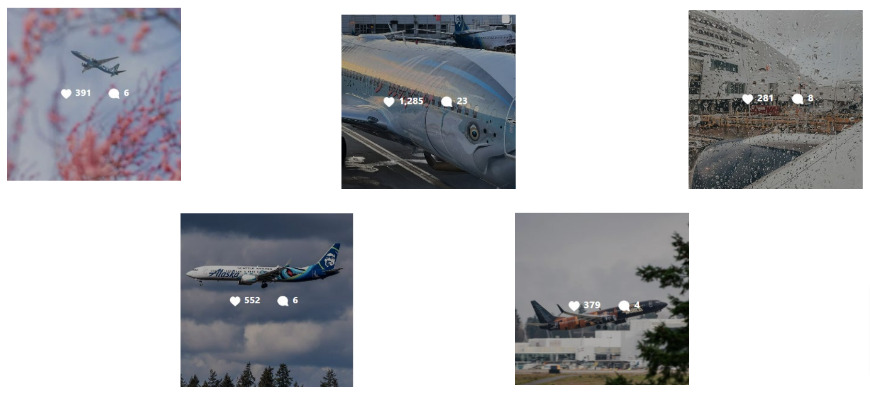
It was a fantastic way for Abbey to build relationships with the AvGeeks community. That’s important because they’re a highly valuable user-generated content (UGC) resource.
“They always get some of the best shots,” Abbey explains. “These are the experts at getting photos of airplanes, so being able to build those relationships so that we can use their photos is really important to us because it is some of the most engaging content.”
Experimenting With Paid Influencer Relationships
Given the success of Port of Seattle’s influencer events, Abbey was keen to start testing an ambassador program involving paid influencer partnerships.
The pilot program launched in 2022 and saw the airport team up with local influencer Tash Haynes, with whom Abbey had built a relationship over previous years. “We just knew she would be really great for this pilot program,” she says.
The idea was to give Tash an in-depth understanding of SEA’s brand so she could serve as an informal spokesperson, expanding the airport’s exposure on her channels by creating content that:
- Emphasized programs and facilities at the airport that enhance the customer experience
- Helped shape perceptions of the airport in line with Port of Seattle’s brand values
The collaboration focused on the airport’s three primary passenger peak travel seasons — spring travel in April, summer travel in June through August, and winter holiday travel in November and December. Throughout, Tash shared behind-the-scenes content and insider travel tips through Instagram Reels and Stories, a takeover of the FlySEA Instagram account, a blog post, and photography.
View this post on Instagram
Even though Tash was presenting pretty basic information — the type of stuff SEA mentions all the time in its social posts and news releases — it cut through like never before.
“For Tash to present them, it really came across as something new to people, and her audience reacted in a way that was really positive,” says Abbey.
“It really raised awareness in a way that we had never been able to do. For the amount that we paid her — which I believe was $7,500 over the course of the year — it really paid off to make people aware of these things that are really important from our brand perspective.”
Quick Takeaways
Whether you’re new to the world of influencer marketing or looking to enhance your existing influencer program, Abbey has the following words of wisdom:
- Start small, working with influencers on a one-to-one basis if necessary
- Try working with partners. While you might not have money, partners often do
- Build and nurture influencer relationships, especially if you’re not paying them
- If you can’t pay, find something unique you can offer in return for coverage
- Find influencers and bloggers who fit with your brand
- Invite influencers to traditional media events
- Always give appropriate credit to creators when sharing user-generated content
Attend one of our upcoming social media conferences to learn more tried-and-trusted insights and tactics from expert social media marketers.
Featured image by Pexels.

